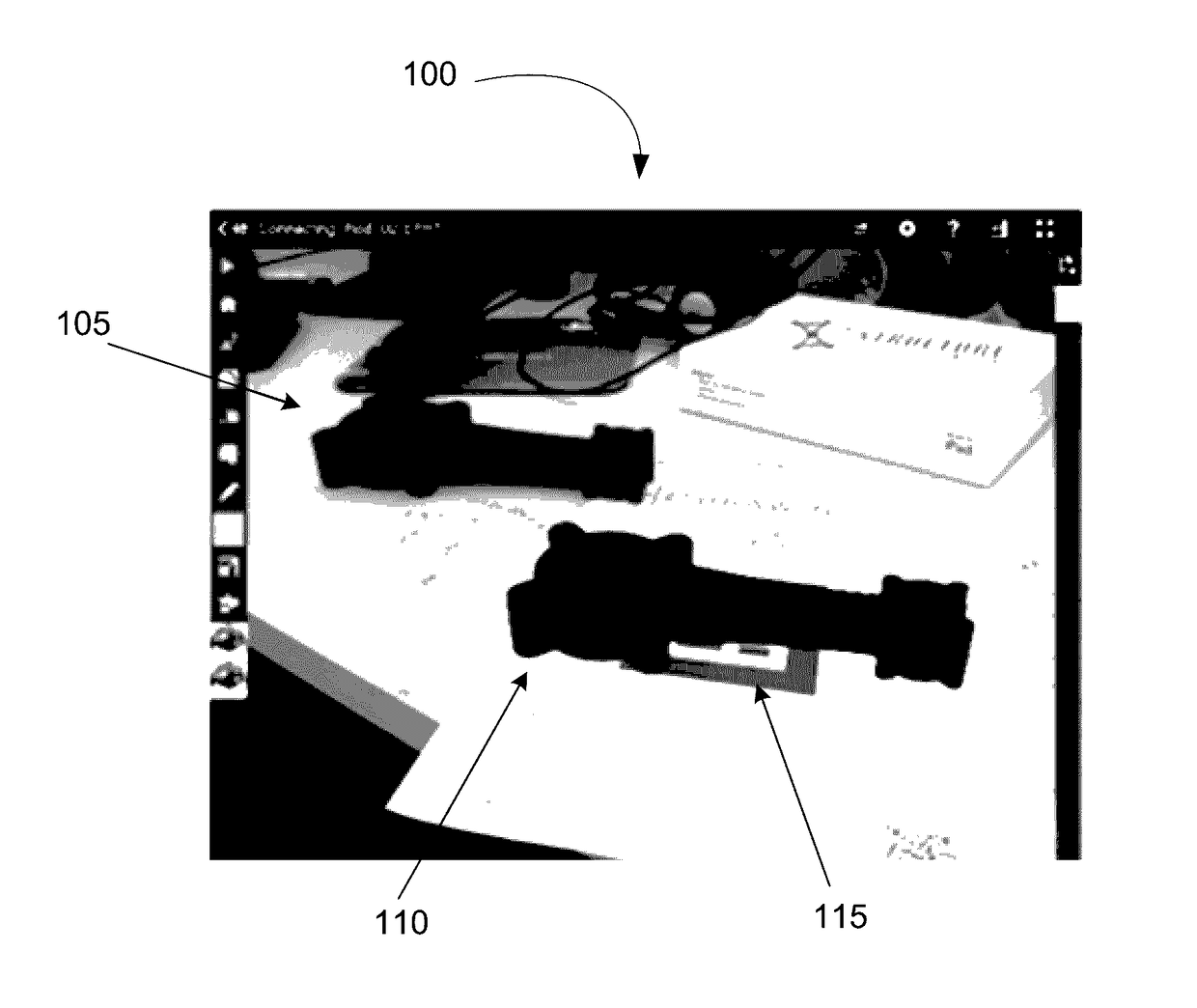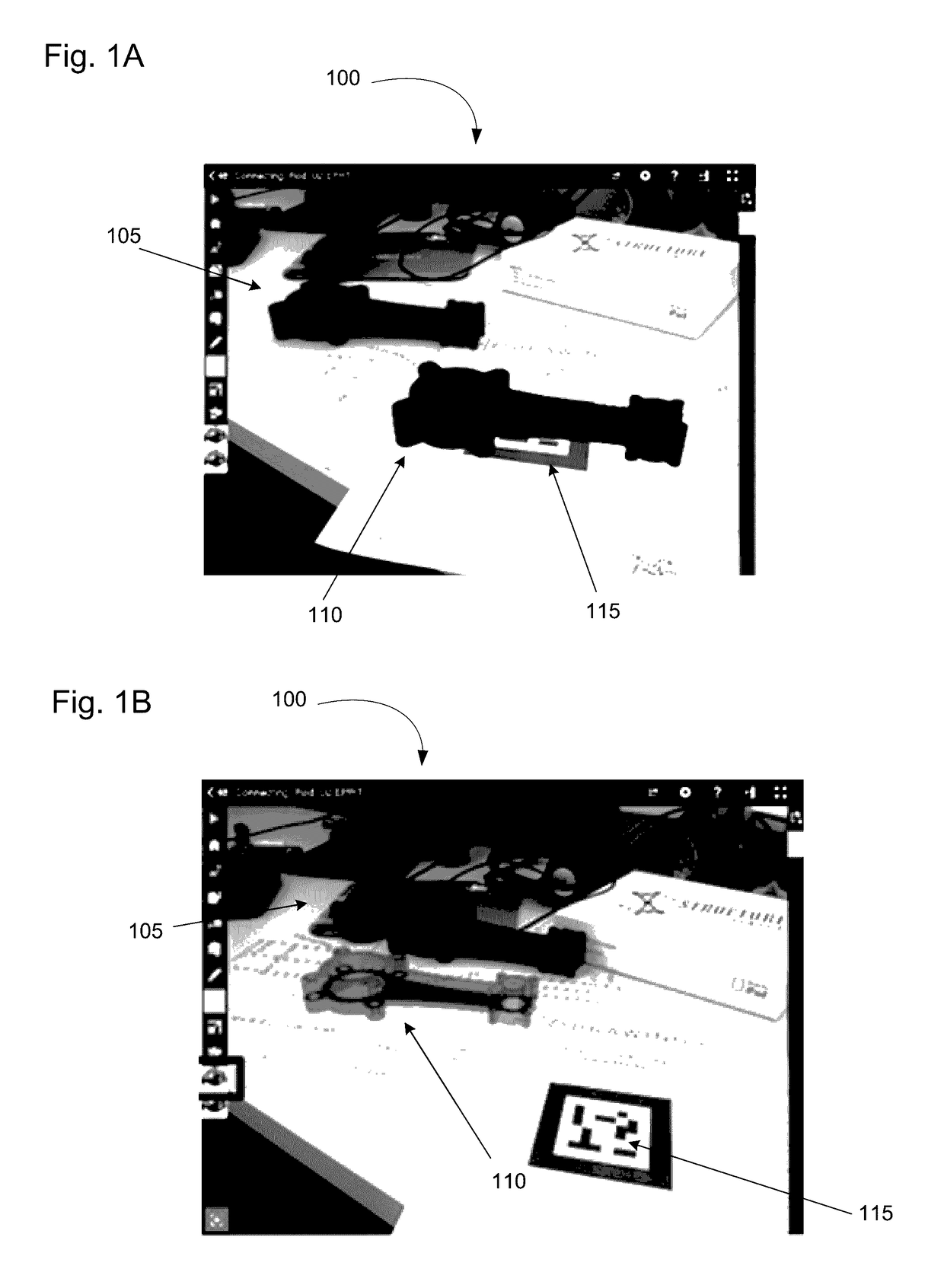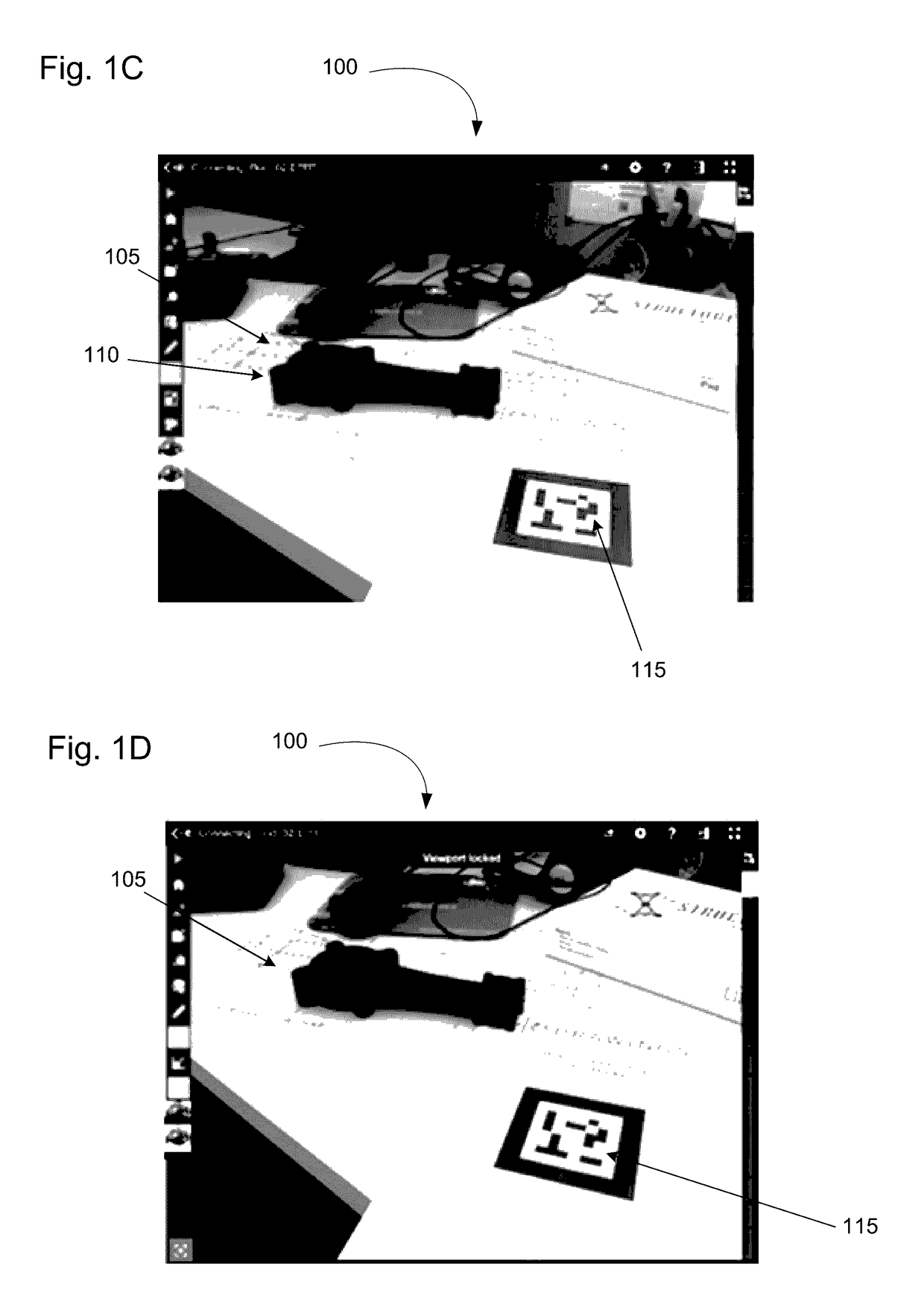Annotating Real-World Objects
- Summary
- Abstract
- Description
- Claims
- Application Information
AI Technical Summary
Benefits of technology
Problems solved by technology
Method used
Image
Examples
Embodiment Construction
[0022]The present invention enables a user to visualize and author model-based definition (MBD) annotations in a real-world environment. Moreover, the annotations may be displayed on a real-world object. The present invention utilizes augmented reality (AR) viewed through a camera-equipped device (e.g., a tablet, a mobile phone, or wearable AR glasses) to produce an image of a real-world environment. In an embodiment, a real-world object is aligned with a transparent 3D model of the object. The user may reference the underlying geometry (including faces, edges, and vertices), and MBD features (such as holes, bosses, fillets, chamfers, cuts, shells, lofts, and sweeps), to review and annotate the model in a real-world environment. As a result, a user has the ability to (a) view MBD dimensions and tolerances on a real-world object in a real-world environment, (b) query model dimensions and tolerances and display the dimensions and tolerances on the real-world object, (c) use the real-w...
PUM
 Login to View More
Login to View More Abstract
Description
Claims
Application Information
 Login to View More
Login to View More - R&D
- Intellectual Property
- Life Sciences
- Materials
- Tech Scout
- Unparalleled Data Quality
- Higher Quality Content
- 60% Fewer Hallucinations
Browse by: Latest US Patents, China's latest patents, Technical Efficacy Thesaurus, Application Domain, Technology Topic, Popular Technical Reports.
© 2025 PatSnap. All rights reserved.Legal|Privacy policy|Modern Slavery Act Transparency Statement|Sitemap|About US| Contact US: help@patsnap.com



